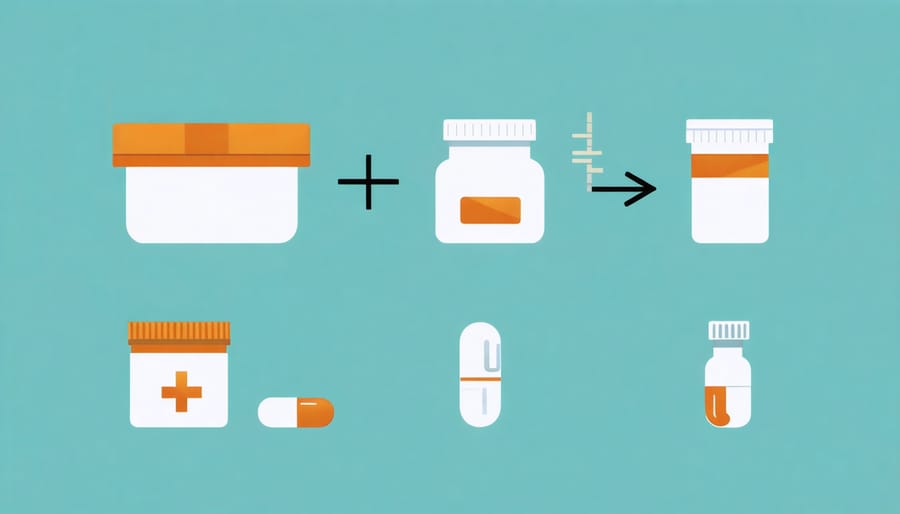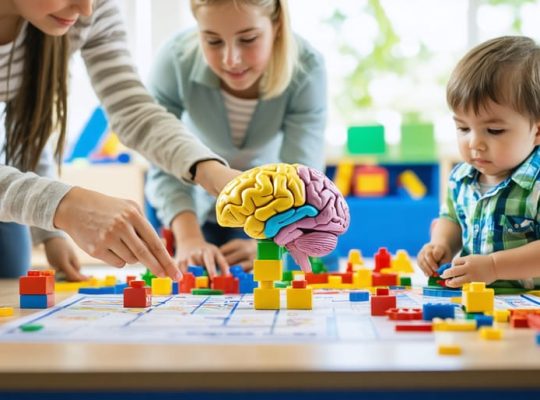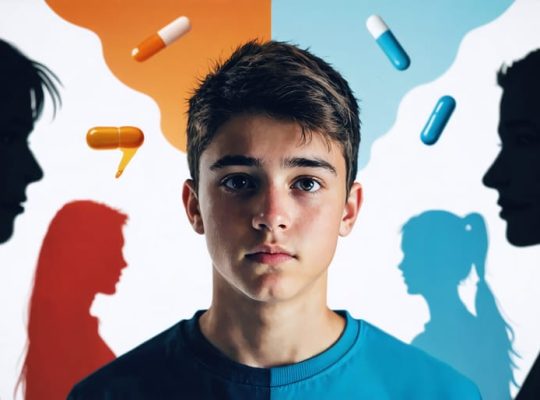Empowering elementary students with knowledge about substance abuse requires a delicate balance of age-appropriate honesty and proactive prevention strategies. Recent studies show that children who receive comprehensive drug education before age 12 are significantly less likely to experiment with substances during their teenage years. By introducing these crucial conversations in elementary school, we create a foundation of trust and understanding that helps protect children during their most vulnerable developmental stages.
The key to effective drug education lies in moving beyond simple “just say no” messaging to foster critical thinking skills and emotional resilience. Through interactive learning experiences, open dialogue, and positive reinforcement, educators and parents can help young students develop the confidence and decision-making abilities they need to navigate peer pressure and make healthy choices.
This comprehensive approach addresses not just the physical dangers of substance use, but also builds essential life skills like self-awareness, emotional regulation, and effective communication. By integrating drug education into broader conversations about health, wellness, and personal safety, we create a supportive environment where children feel empowered to ask questions and seek guidance from trusted adults.
Why Early Drug Education Matters
The Right Age to Start
Research shows that early substance abuse prevention should begin around ages 8-10, when children are developmentally ready to understand complex health concepts but haven’t typically been exposed to substances. Starting conversations at this age helps establish a foundation of trust and knowledge before peer pressure becomes more intense in middle school.
However, simpler discussions about medicine safety and making healthy choices can start as early as age 5 or 6. At this stage, focus on basic concepts like only taking medicine from trusted adults and understanding the difference between healthy and harmful substances.
The key is to match the depth and complexity of information to your child’s maturity level. Watch for natural teaching moments, like seeing someone smoking or discussing medication during a doctor’s visit. These opportunities allow for organic conversations that feel less intimidating for both parent and child.
Remember that drug education isn’t a one-time discussion but an ongoing dialogue that evolves as your child grows and faces new challenges.
Building a Foundation of Trust
Creating a safe and trusting environment is essential when discussing substances with elementary students. Children need to feel comfortable asking questions and sharing their thoughts without fear of judgment or punishment. This foundation begins with establishing open lines of communication and consistently demonstrating that their concerns are valid and worthy of attention.
Start by having regular, casual conversations about health and safety in general. When children feel heard during everyday discussions, they’re more likely to approach you with serious questions about drugs and alcohol. Use positive reinforcement when they share their thoughts, and avoid reactive responses that might discourage future conversations.
Teachers and parents can create this safe space by:
– Maintaining a calm and approachable demeanor
– Using age-appropriate language
– Responding to questions honestly and directly
– Acknowledging when you don’t have an answer
– Following up on conversations to show ongoing support
Remember that building trust takes time and consistency. When children feel secure in expressing their curiosity or concerns about substances, they’re more likely to make informed decisions and seek guidance when needed. This emotional safety net becomes particularly valuable as they encounter more complex situations in their later years.

Age-Appropriate Teaching Strategies
Using Stories and Role-Play
Stories and role-play activities provide powerful tools for teaching healthy choices to elementary students. When children become actively involved in storytelling and dramatic scenarios, they’re more likely to internalize important lessons about drug prevention.
Consider using age-appropriate stories featuring relatable characters who face decisions about medicines and harmful substances. For example, a tale about a character who learns to say “no” to unknown pills, even when offered by friends, can spark meaningful discussions. These stories help children understand complex situations in a safe, non-threatening way.
Role-play scenarios give students practical experience in handling real-life situations. Have children practice:
– Responding to peer pressure
– Identifying safe and unsafe medicines
– Asking trusted adults for help
– Recognizing and avoiding dangerous substances
Remember to keep scenarios simple and positive. For instance, students might act out a scene where they help a friend make good choices or demonstrate how to properly handle household medicines with adult supervision.
Encourage discussion after each story or role-play activity. Ask open-ended questions like “What would you do in this situation?” or “How did the character make a safe choice?” This helps children develop critical thinking skills while reinforcing important safety messages.

Making Safety Personal
Making drug education personal and relatable helps elementary students better understand and retain important safety concepts. One effective approach is teaching children to recognize their body’s warning signals – those “gut feelings” that tell them something isn’t right. When discussing substances, encourage students to trust these instincts and feel confident saying “no” when uncomfortable situations arise.
Role-playing exercises can help students practice decision-making skills in a safe environment. Create scenarios where children can rehearse refusing peer pressure or seeking help from trusted adults. This hands-on experience builds confidence and helps to protect children from substance abuse by developing strong self-advocacy skills early on.
Incorporate personal safety rules into daily conversations, such as “my body belongs to me” and “I can always talk to trusted adults.” These messages reinforce bodily autonomy and help children understand they have control over what goes into their bodies. Create a “safety network” with students by identifying at least five trusted adults they can turn to when facing difficult situations.
Remember to praise children for making good choices and sharing their concerns. This positive reinforcement strengthens their confidence in making healthy decisions and maintains open communication channels between students and their support system.
Key Messages to Communicate
Medicine Safety Basics
Teaching children about medicine safety is a crucial foundation for drug education. Start by explaining that medicines are helpful tools when used correctly but can be dangerous if misused. Emphasize that medications should only be taken with adult supervision – whether it’s a parent, teacher, school nurse, or trusted caregiver.
Create simple rules that children can easily remember, such as “never take medicine without a grown-up” and “medicine is not candy.” Use age-appropriate examples to explain why some medicines look like candy but aren’t meant to be treated as treats. This helps children understand the importance of being careful with any medicine they encounter.
Teach students to recognize common medicine forms – pills, liquids, and patches – and explain that even vitamin gummies count as medicine. Role-playing scenarios can help children practice saying “no” if another child offers them medicine and knowing when to tell a trusted adult about medicine-related situations.
Consider using visual aids like empty medicine bottles (with labels removed) to demonstrate proper storage. Remind children that medicine should always be kept in a secure place, out of reach, and in its original container. This hands-on approach makes the lessons more memorable and practical for young learners.

Resisting Peer Pressure
Teaching children to resist peer pressure is a crucial life skill that extends far beyond drug prevention. When children understand how to stand firm in their decisions and maintain their values, they’re better equipped for dealing with peer pressure in all situations.
Start by role-playing common scenarios where children might feel pressured to try substances. Practice simple, direct responses like “No, thanks” or “I don’t want to.” Encourage children to walk away from uncomfortable situations and remind them that true friends will respect their choices.
Build their confidence by praising their good decisions and helping them identify trusted adults they can turn to when feeling pressured. Create a special code word or phrase they can use when calling home if they need help getting out of a difficult situation.
Remember to reinforce that it’s okay to be different and that making healthy choices is something to be proud of. Share age-appropriate stories about times when you or others successfully stood up to peer pressure, helping children understand they’re not alone in facing these challenges.
Supporting Resources and Programs
Educators and parents have access to numerous evidence-based resources and programs designed specifically for elementary-level drug education. The National Institute on Drug Abuse (NIDA) offers free, downloadable curriculum materials through their “Brain Power!” program, which uses age-appropriate activities and interactive lessons to teach children about healthy choices.
The “Too Good for Drugs” program, widely implemented in schools nationwide, provides grade-specific lesson plans and materials that focus on building social-emotional skills and resistance strategies. These materials include colorful workbooks, engaging activities, and take-home components that encourage family participation.
Local health departments and prevention organizations often provide free educational materials and guest speaker programs. Many offer training sessions for teachers and parents, helping them feel more confident in discussing these sensitive topics with young children.
Digital resources like BrainPOP and Discovery Education offer interactive videos, games, and activities that make learning about drug prevention engaging and memorable. These platforms provide secure, child-friendly content that can be used both in classrooms and at home.
The D.A.R.E. program has evolved to meet modern challenges, offering updated curriculum materials that emphasize decision-making skills and peer pressure resistance. Their elementary school program includes workbooks, activities, and certificates of completion that help make the learning experience more meaningful for students.
Remember to check with your school district’s health education coordinator, as many districts have approved resource lists and established partnerships with local prevention programs that align with state educational standards and community values.
Drug education for elementary students is most effective when it becomes a shared responsibility among parents, teachers, healthcare providers, and the community. By working together, we create a strong support system that reinforces positive messages and healthy choices. Parents can extend classroom lessons at home through open conversations and modeling responsible behavior, while teachers can collaborate with school counselors to address individual student concerns.
Looking ahead, it’s essential to regularly evaluate and update drug education programs to reflect current challenges and emerging trends. This might include incorporating new teaching methods, addressing the latest health concerns, or adapting to changing social influences. Consider joining parent-teacher committees, attending workshops, or participating in community prevention programs to stay informed and involved.
Remember that drug education isn’t a one-time conversation but an ongoing process that evolves with your child’s development. By maintaining open communication channels and staying actively engaged in your child’s education, you help build the foundation for healthy decision-making skills that will serve them throughout their lives. Together, we can create a safer, more informed future for our children.







